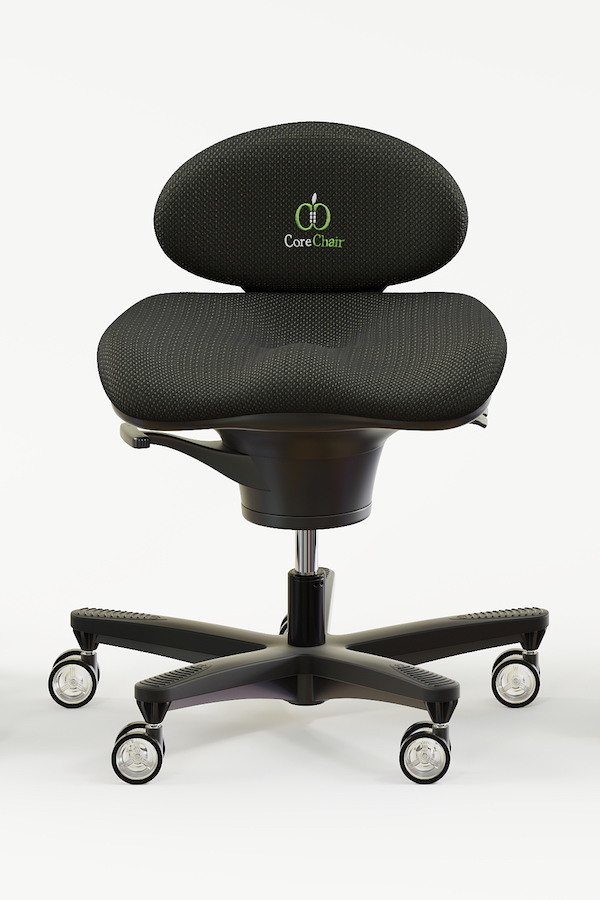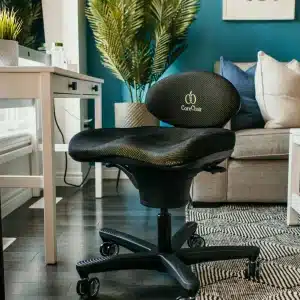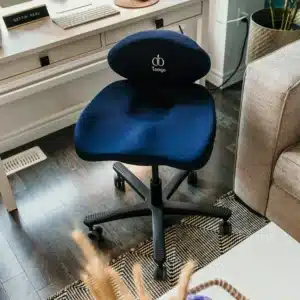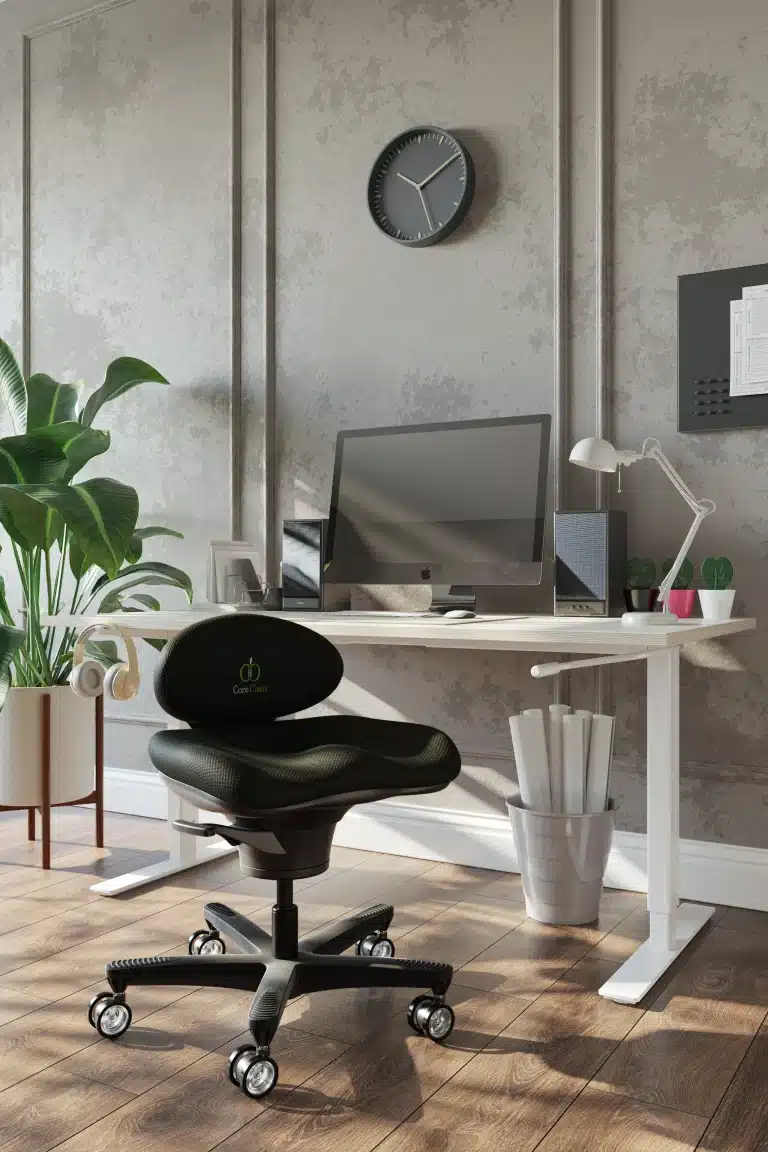Osteoporosis, a condition characterized by weakened bones, affects millions worldwide, significantly impacting their quality of life. The CoreChair, an innovative seating solution, offers a unique approach to manage this condition through the concept of active sitting.
UNDERSTANDING OSTEOPOROSIS
Osteoporosis is a medical condition characterized by the weakening of bones, which leads to a higher risk of fractures (broken bones). It occurs when the density and quality of bone are reduced, causing bones to become porous and brittle. As a result, even minor bumps or falls can lead to fractures, particularly in the hip, spine, and wrist.
The bones in our body are constantly being broken down and rebuilt in a process called remodeling. Osteoporosis occurs when the balance between bone formation and bone resorption is disrupted, resulting in a net loss of bone mass. Several factors can contribute to the development of osteoporosis, including:
1. Age
2. Gender
3. Family history
4. Hormonal changes
5. Nutritional factors
6. Medications / Medical Conditions
7. Lack of physical activity
Osteoporosis is often referred to as a “silent disease” because it typically progresses without any noticeable symptoms until a fracture occurs. Common complications of osteoporosis include fractures of the hip, spine, and wrist, which can lead to pain, disability, and a decreased quality of life.
Lifestyle adjustments, including diet and exercise, are often recommended for managing osteoporosis.
INTRODUCING THE CONCEPT OF ACTIVE SITTING
Active sitting involves sitting in a way that engages muscles and promotes movement. Unlike traditional static sitting, active sitting encourages continuous micro-movements, improving circulation, muscle engagement, and overall health. Studies, such as those by Buckley et al. (2015), have shown that active sitting can reduce the risks associated with prolonged sedentary behavior.
The CoreChair is designed to facilitate active sitting. Its unique pivoting seat encourages continuous, controlled movement, engaging core muscles and promoting better posture. This dynamic sitting approach differs significantly from conventional office chairs.
CORECHAIR AND BONE HEALTH
Engaging in movements, even while seated, can be beneficial for bone health. A study by Umemura et al. (1997) demonstrated that small, frequent strains on bones could improve bone density. The CoreChair’s design inherently encourages such movements, potentially aiding in the maintenance of bone health in individuals with osteoporosis.
PERSONAL TESTIMONY ABOUT THE BENEFITS OF CORECHAIR FOR THEIR OSTEOPOROSIS
Several users with osteoporosis have reported positive experiences with the CoreChair. For instance, a case study involving a 60-year-old woman with osteoporosis revealed improved comfort and reduced pain after switching to the CoreChair. These testimonies underscore the chair’s potential benefits.
I work out of my home and do about 4-5 hours a day at my desk. I have hip and back issues from osteoporosis and arthritis and am working with a physiotherapist. I needed something that would cause more movement than just daily stretches and getting up out of my chair. I am starting to notice less pain and more movement in the hips since getting the [CoreChair]. My therapist has started noticing I am starting to get more movement now as well. The chair is not going to solve all the issues but it is becoming a major component in my daily regiment to keep me from losing mobility.
Hip Issues & Movement | Louise Wiebe | Canada | July 2022
EXPERT OPINIONS
Healthcare professionals have acknowledged the importance of active sitting,
“I have experienced the ride of the CoreChair and believe that it is an excellent therapeutic adjunct to my chiropractic objectives. In addition to mobilizing the critical joints impacted by chronic sitting, it also stimulates core muscle endurance to further stabilize these joints and provides an optimal functional sitting posture.”
Dr. Howard Zamick | DC Doctor of Chiropractic
The CoreChair offers an approach to managing osteoporosis through active sitting. Its design promotes movement and muscle engagement, which can be beneficial for bone health. While not a standalone solution, it can be a valuable component of a comprehensive strategy to manage osteoporosis. As always, individuals should consult with healthcare providers when considering new approaches to managing their health.









